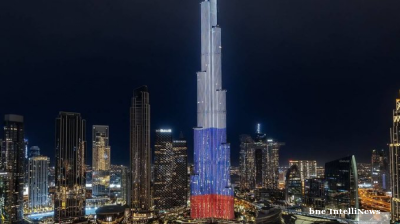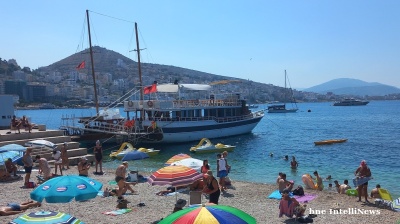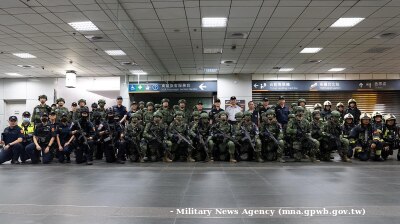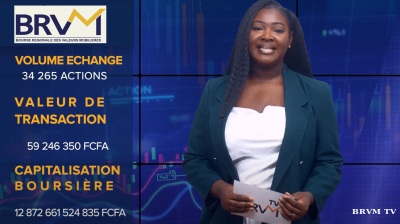Morocco is suffering from the worst drought in 40 years and India is in the middle of a crushing heat wave that has seen temperatures rise to a sweltering 62C. Climate change and now the war in Ukraine have put an enormous strain on the global food supply system and the SEMED countries of North Africa are in the firing line, as they are the world’s biggest importers of grain.
The EBRD has been investing in Egypt, Jordan, Morocco and Tunisia since September 2012 and added Lebanon in 2018 as well as in the West Bank and Gaza, which are collectively known as the SEMED countries by the development bank.
Ekaterina Krivanos, the senior economist for markets and trade at the Food and Agriculture Organization (FAO) of the UN, painted an alarming picture of falling food security in North Africa during a panel discussion at the EBRD’s annual meeting in Morocco on May 11.
Between 720mn and 811mn people faced hunger in 2020, which was an increase of 118mn from a year earlier, and this number may fall but the UN FAO estimates that some 660mn people will still be facing a lack of food by 2030. In 2021 over 190mn were already living in a food crisis or worse, Krivanos added, which is nearly double the number from 2016.
Food security has always been a problem but it is a problem that has got worse in the last few years as a series of shocks have hit the global economy one after another, starting with the food price increases caused by the coronavirus (COVID-19) pandemic in 2020 and followed by the Russo-Ukrainian war.
“The increase in cost of a healthy diet and high levels of income inequality put healthy diets further out of the reach of more people in Africa and in Latin America and the Caribbean,” Krivanos told the conference delegates.
Rising prices
The problem is actually not a new one, as food prices have been climbing for several years already, and todays woes and wars have only exacerbated an already existing problem, says Gérald Theis, the chairman of CereMed UK.
“The increase in grain prices didn't start on February 24. Basically it all started more than two years ago with the COVID crisis,” says Thesis. “We started to see some funny, protectionist behaviour starting with China that started to massively buy grain, especially corn, to cap the meat inflation in China. That was the first big disruption. Then we saw Russian willing to cap internal Russian inflation, especially in bread, so it started to implement quotas as to how much can be exported.”
Supply of grain on the global markets was already limited as other countries in Latin America followed suit with taxes and quotas to shore up their own domestic supplies, and that led to the first bout of food price inflation and sent prices up 50%.
“Then February 24 happened. For grain traders that was like 9/11. We had a tsunami – let’s call it a tsunami,” said Thesis. “For eight trading sessions in the Chicago Board of Trade, the main grain market, we saw eight days of “limit up” – go from one limit to the next one – and in eight days we saw a move of nearly $200 per tonne, or price rise of 160%.”
Thesis said the last time traders had seen such a big increase in prices was in 2007 when Russia imposed an export ban on grain, but it took a lot longer.
“If you asked me about the feeling of the traders this time, it was a nightmare,” Thesis said. As for the outlook for the war and the price of grain, Thesis said the market has no idea.
“But if this war were to stop tomorrow we will not go back to normal,” Thesis said. “And that also includes the sanctions. I know that food is not included in the sanctions, but they are making things very difficult for exporters and trading houses.”
Thesis believes that prices will remain at a “very high level” and will also be extremely volatile even when peace returns. The emphasis will be on diversifying sources and a return to more government-to-government deals. He also highlighted that production problems will also have a big impact on prices.
Four main drivers
There are four major factors at play in the current crisis and they are negatively related to each other, which further undermines global food security.
The first two are external to food systems, conflict and climate, and those that are internal are low productively and inefficient supply chains that push up the cost of food, making a healthy diet unaffordable to lower income people. “High and persistent levels of inequality only make the situation worse,” says Krivanos.
Since 2014-16 the levels of food insecirty have increased in the SEMED countries. In 2021 conflict was the primary driver in Egypt, Jordan and Lebanon, which also hold the most refugees from Syria. Amongst refugees food insecurity can affect half (49%) of the population.
“An unprecedented public, political and economic crisis unfolded in Lebanon in 2021, making it much more severe,” says Krivanos.
Counter-intuitively, the SEMED region also has high rates of obesity.
“Obesity is significant and growing, in particular in Egypt and Lebanon, where the rates are double the global average,” says Krivanos.
The problem with food security is not so much the lack of grain as price rises putting food supplies out of the reach of lower income earners. Currently the UN FAO reports that food prices are at an all-time high, with the food prices index jumping in March to unprecedented levels with new all-time highs, especially for vegetable oils, cereals and meats.
“In April 2022 the indices stabilised somewhat but remain at their highest levels since 1990, driven by disruptions; weather shocks and the war in Ukraine has further exacerbated the situation by disrupting grain supplies,” Krivanos said.
Russia and Ukraine are world leaders in key staples and combined they account for 30% of global wheat and 20% of maize. The Middle East and North Africa (MENA) countries are heavily dependent on imports from these two countries, but several countries in sub-Saharan Africa are also exposed.
The most affected countries are Jordan and Lebanon, both of which depend on imports of around three quarters of their food supplies and where around half of the population are facing food insecurity, according to UN FAO calculations.
Tunisia, Egypt and Morocco import just under half their food needs and around a quarter of their populations face food insecurities, but the drought in Morocco this year has made the situation worse than normal. Egypt is particularly exposed to the Russo-Ukraine war, as it sources 42% of all the calories it imports from Russia and Ukraine. And Egypt, along with Lebanon, import three quarters (75%) of their wheat from Russia or Ukraine.
“All the countries in SEMED region are net importers of food and heavily rely on them to source dietary energy. At the extreme Jordan sources 80% of all calories available in the country through imports. What this means is global food shocks will affect, and are already affecting, these countries,” says Krivanos.
For policymakers the problem they need to solve is dealing with the growing food import bill, rather than access to grain supplies per se.
“Food import bills in SEMED can be expected to increase since the war in Ukraine started. We are already seeing high prices,” says Krivanos.
The governments of SEMED countries will need to adopt a broad variety of policies to mitigate the rise in prices to prevent a crisis, which can be short- to long-term and include diversification of food import sources and making import more efficient, but other priorities include longer-term food import transformation and raising the competitiveness of high-value food exports such as fruit and oil, which will compensate for increasingly expensive imports.
This year’s EBRD Annual Meeting and Business Forum, its 31st, is only the second to be held in what the bank calls the southern and eastern Mediterranean and, because of the pandemic, the first to be held in a physical setting since 2019.
The 2022 Annual Meeting and Business Forum, which ends tomorrow and features numerous panels all being live-streamed, is also the first to be held on the continent of Africa.
The bank has invested €3.3bn in Morocco since it began working in the country 10 years ago – and €15.8bn in the wider southern and eastern Mediterranean, which also includes Egypt, Jordan, Lebanon, Tunisia and the West Bank and Gaza.
Features
KSE: Ukraine is facing a $53bn budget shortfall, but economy is stable for now
Ukraine is in urgent need of additional financing from partners as the continuation of the war drives up defence spending and reconstruction needs, jeopardizes budget financing, weighs on the balance of payments, and slows economic growth.

PANNIER: Ruling family’s ‘palace in the sky’ cruel sight for Turkmenistan’s poor souls down below
Photos posted of renovated Boeing by US makeover manager offer further insight into "ultra-luxurious" world enjoyed by Berdimuhamedovs.

Russia tax service targets Russian accounts in UAE
The Russian Federal Tax Service (FTS) has ramped up its scrutiny of Russian nationals holding accounts in the United Arab Emirates, following the effective implementation of automatic tax information exchange between the two countries.

INTERVIEW: Can Albania’s tourism miracle last?
As social media brings in the crowds, the head of the Albanian Tour Operators Association tells bne IntelliNews Albania should turn away from mass-market tourism and focus on higher-value offerings.




